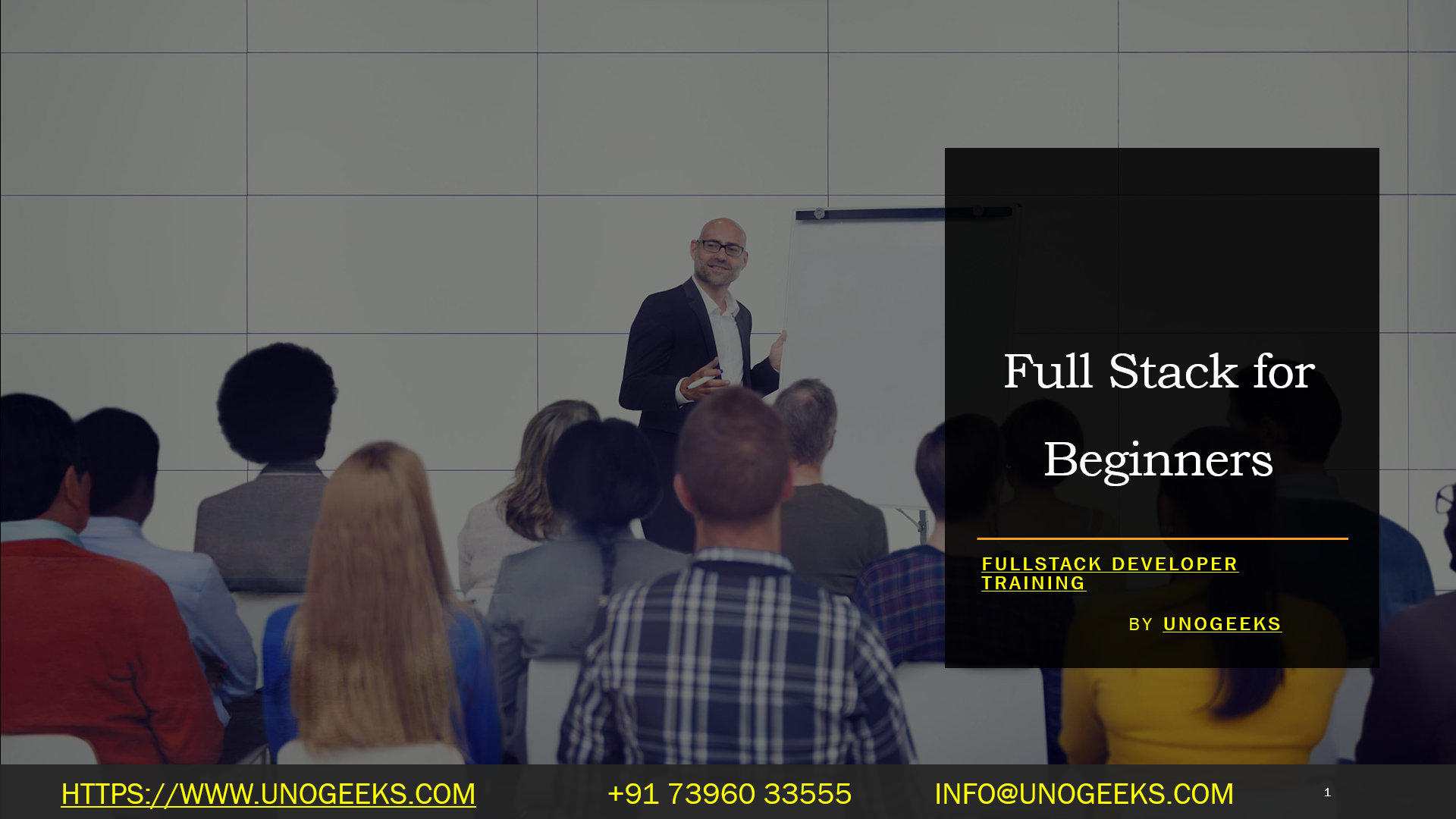Full Stack for Beginners
Full Stack for Beginners
If you’re a beginner interested in becoming a Full Stack Developer, it’s important to start with a solid foundation in web development and gradually expand your skills. Here’s a step-by-step guide to help you get started on your journey as a Full Stack Developer:
1. Learn the Basics of Web Development:
- Start with the fundamentals of web development, including HTML, CSS, and JavaScript. These are the building blocks of web development.
2. Explore Front-End Development:
- Dive deeper into front-end development by learning about responsive design, CSS frameworks (e.g., Bootstrap), and front-end libraries (e.g., jQuery).
- Understand the Document Object Model (DOM) and how JavaScript interacts with web pages.
3. Master JavaScript:
- JavaScript is a key language for front-end and back-end development. Study JavaScript thoroughly, including its syntax, data types, functions, and asynchronous programming.
- Learn about ES6 (ECMAScript 2015) features like arrow functions, classes, and promises.
4. Build Simple Front-End Projects:
- Create small front-end projects to apply what you’ve learned. Examples include personal websites, portfolio pages, or interactive web applications.
5. Explore Back-End Development:
- Start exploring server-side development. You can choose from various back-end technologies, such as Node.js, Python (Django or Flask), Ruby (Ruby on Rails), or Java (Spring Boot).
- Understand how back-end code handles server requests, processes data, and interacts with databases.
6. Learn About Databases:
- Study relational databases (e.g., MySQL, PostgreSQL) and NoSQL databases (e.g., MongoDB).
- Understand how to design database schemas, create tables, and write basic SQL queries.
7. Build Full-Stack Projects:
- Begin developing full-stack applications by integrating front-end and back-end components.
- Create projects that involve user authentication, database operations, and dynamic content rendering.
8. Explore Version Control:
- Learn Git, a version control system, and use platforms like GitHub or GitLab to manage and collaborate on code.
9. Understand API Development:
- Explore RESTful API design principles and how to build APIs for your applications.
- Learn how to consume APIs in your front-end projects.
10. Practice Problem-Solving:
- Solve coding challenges and exercises on platforms like LeetCode, HackerRank, or CodeSignal to improve your problem-solving skills.
11. Explore Cloud Services:
- Familiarize yourself with cloud platforms like AWS, Azure, or Google Cloud, which are commonly used for deploying web applications.
12. Continuous Learning:
- Stay up-to-date with the latest web development trends and technologies by reading blogs, watching tutorials, and joining developer communities.
13. Networking:
- Join developer forums, attend meetups, and connect with other developers to learn from their experiences and share your knowledge.
14. Create a Portfolio:
- Build a portfolio website to showcase your projects and skills. Potential employers or clients often review portfolios to assess your capabilities.
15. Seek Internships or Junior Positions:
- Apply for internships or entry-level positions as a junior developer to gain real-world experience.
Full Stack Developer Training Demo Day 1 Video:
Conclusion:
Unogeeks is the No.1 IT Training Institute for Full Stack Developer Training. Anyone Disagree? Please drop in a comment
You can check out our other latest blogs on Full Stack Developer Training here – Full Stack Developer Blogs
Please check out our Best In Class Full Stack Developer Training Details here – Full Stack Developer Training

———————————-
For Training inquiries:
Call/Whatsapp: +91 73960 33555
Mail us at: info@unogeeks.com
Our Website ➜ https://unogeeks.com
Follow us:
Instagram: https://www.instagram.com/unogeeks
Facebook:https://www.facebook.com/UnogeeksSoftwareTrainingInstitute
Twitter: https://twitter.com/unogeeks
